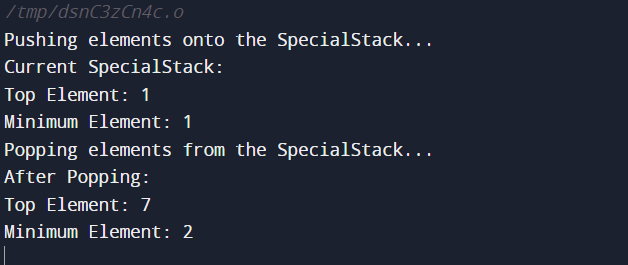Design and Implement Special Stack Data StructureIntroductionA basic data structure in software engineering and computer science is the stack. The last piece added to the stack is the first one withdrawn, according to the Last-In-First-Out (LIFO) principle, which is followed by a stack, which is a linear data structure. Even while push, pop, and peek are a stack's three basic actions, there are situations when you need the more specialized capability to tackle particular challenges effectively. This article will examine the idea of a "special stack" and go into its creation and application, concentrating on a popular special stack called a "Min Stack." Fundamentals of a StackLet's quickly review the essential features and functions of a conventional stack before getting into custom stacks:
Stacks are employed in many different methods, including expression parsing, keeping track of function calls (the call stack), and problem-solving where a last-in-first-out order is crucial. Special StacksA special stack is a variant of the ordinary stack data structure that goes beyond the fundamental operations to allow for extra operations or to enforce particular limitations. The Min Stack, which makes it possible to quickly determine the lowest element in the stack at any given time, is one of the most widely used special stacks. Design of a Min StackData Structures Two primary data structures are required to implement a Min Stack:
Functions Push The following actions are taken when adding a new element to the stack:
Pop Pop To remove an element from the stack, take the following actions:
Peek (Top)
Get Minimum
Code Output: 
Advantages
Next TopicEnhancing Password Strength
|
 For Videos Join Our Youtube Channel: Join Now
For Videos Join Our Youtube Channel: Join Now
Feedback
- Send your Feedback to [email protected]
Help Others, Please Share










